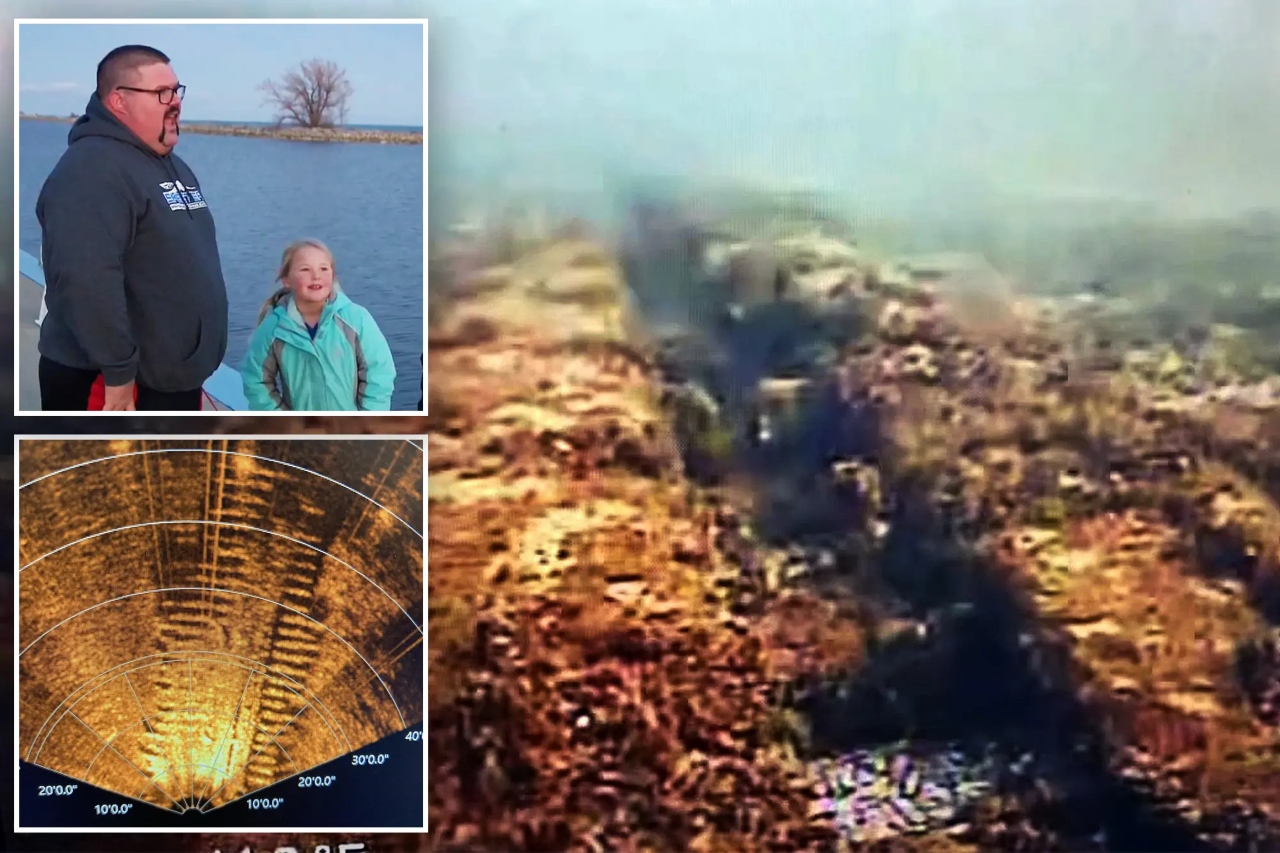A Wisconsin man and his child may have discovered the remains of a ship that ran aground during a deadly fire that struck the state more than 150 years ago.
Tim Wollak and his 6-year-old daughter, Henley, from the city of Peshtigo in northeast Wisconsin, were fishing on Lake Michigan near Green Island this August when they spotted something intriguing on their sonar, the Wisconsin Historical Society (WHS) said in a Facebook post Tuesday.

Wollak thought it was a shipwreck but had never heard of one being in that location. He subsequently posted sonar images and questions about the wreck to several Facebook groups, which eventually found their way to the WHS Maritime Preservation and Archaeology Program.
Working with Wisconsin Department of Natural Resources conservation warden Mike Neal, the WHS investigated the waters with a remotely operated vehicle on December 4.

This revealed the remains of a wooden three-masted sailing ship covered by eight to 10 feet of water. Although the wreck’s identity has yet to be confirmed, the location and available data fit with that of a 122-foot-long vessel called the George L. Newman, which was constructed in 1855, the WHS said.
On October 8, 1871, the deadliest forest fire in U.S. history swept through northeast Wisconsin, claiming more than 1,200 lives, according to the National Oceanic and Atmospheric Administration.The “Peshtigo” fire scorched 1.2 million to 1.5 million acres in total, burning dozens of towns—including the settlement itself, which the blaze consumed in an hour, leading to the deaths of 800 people in this location alone.
On the night of the disaster, the George L. Newman was trying to navigate through thick smoke from the fire with a cargo of lumber when it ran aground on the southeast point of Green Island.
“The smoke was so dense that the Green Island lighthouse keeper kept the light on during the day,” the WHS said. “Keeper Samuel Drew rescued the crew, who remained at the lighthouse for a week while they salvaged what they could from the wrecked vessel. The ship was abandoned, became covered with sand, and was largely forgotten.”

That is seemingly until the discovery of Wollak and his daughter this summer. The WHS Maritime Preservation and Archaeology Program is now planning to survey the wreck in the spring to assess the site for potential listing on the National Register of Historic Places.
“It was actually built in 1855, so it’s a pretty significant shipwreck, pretty old for Wisconsin shipwrecks anyways,” WHS maritime archaeologist Tamara Thomsen told WLUK. “To have it tied to the Peshtigo Fire, it makes it even more special.”


